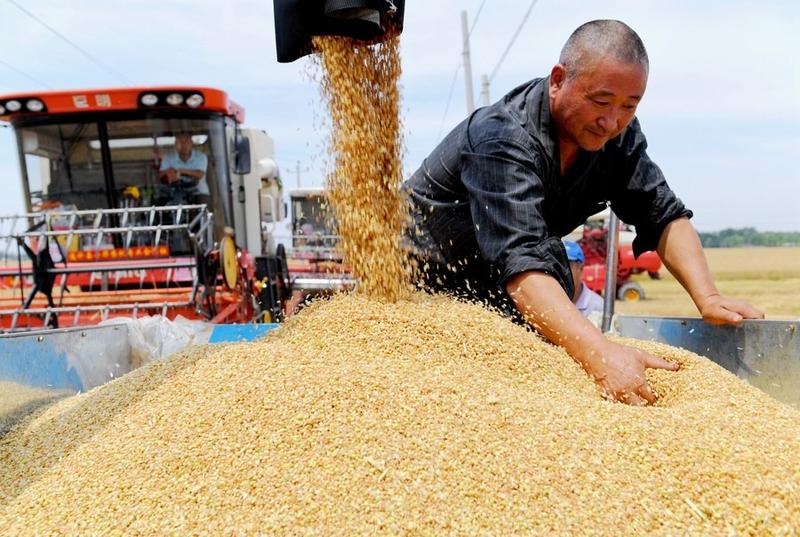 A farmer harvests wheat in the fields of Qianzhuanmen village, Fucheng county, Hengshui city, north China's Hebei province, June 13, 2021. (ZHU XUDONG / XINHUA)
A farmer harvests wheat in the fields of Qianzhuanmen village, Fucheng county, Hengshui city, north China's Hebei province, June 13, 2021. (ZHU XUDONG / XINHUA)
BEIJING - China secured yet another bumper harvest this year, with grain output up 2 percent year on year, the National Bureau of Statistics said Monday.
This is the seventh consecutive year that the country's total grain production has exceeded 650 billion kg
China's grain output reached nearly 1.37 trillion jin (683 billion kg) in 2021, up 13.4 billion kg from last year.
This is the seventh consecutive year that the country's total grain production has exceeded 650 billion kg.
The bumper harvest comes despite extreme regional weather conditions, including record rainstorms in Henan province and periodical droughts in the northwestern areas, said Wang Minghua, an NBS official.
READ MORE: China's grain reserves sufficient, supply secure
The harvest has laid a solid foundation for China to cope with complex and volatile domestic and international environments, overcome risks and challenges, and achieve high-quality development, Wang added.
The total sown area edged up 0.7 percent year on year as the country doubled down on protection of farmlands. The planting area of wheat grew 0.8 percent from 2020, reversing a decline for four years in a row.
Grain output per mu (about 0.067 hectares) grew 1.2 percent from the previous year due to better weather conditions. Sowing acreage expansion of corn — a high-yield crop — also contributed to the rise.
Twenty-seven out of 31 provincial-level regions reported growth in grain output this year, with Xinjiang, Anhui, Hunan, Sichuan and Shandong posting rise of over 500 million kg.
To ensure stable grain output, China has taken a host of measures this year such as issuing subsidies to cushion farmers from the effect of price hikes of agricultural supplies and ramping up disaster control.
Efforts will be made to ensure absolute security of grain and the supply of important sideline agricultural products, and to promote legislation concerning food security, according to a blueprint of the country's social and economic development over the next five to 15 years.


